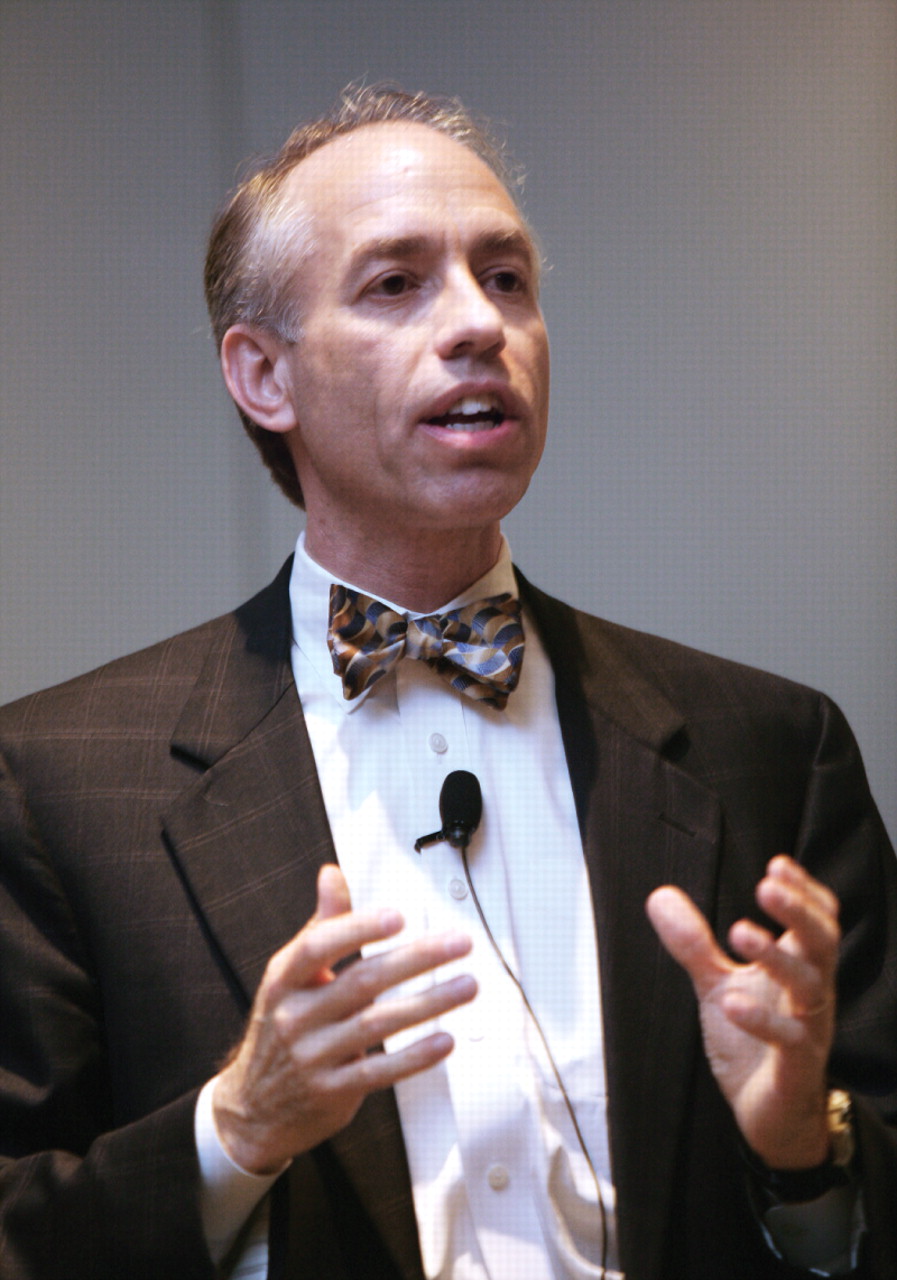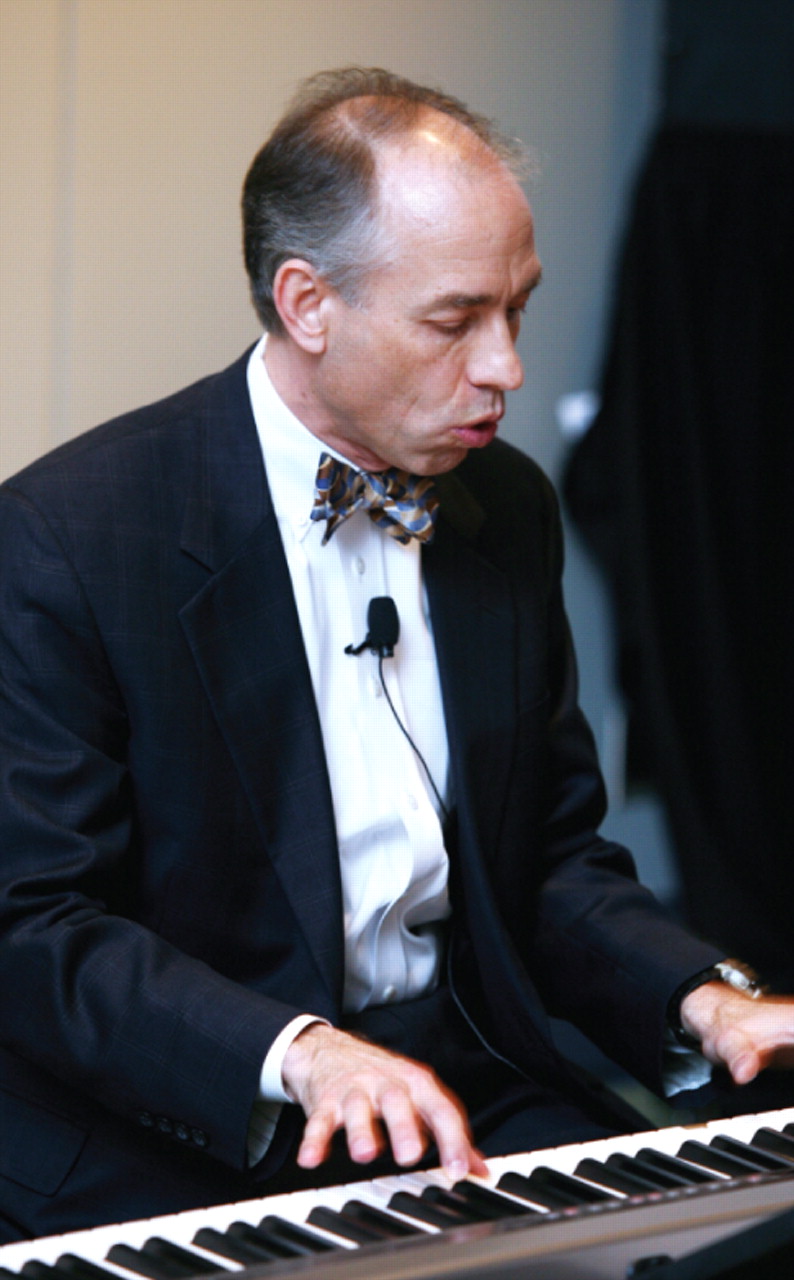Psychiatrists Lack Crystal Balls to Predict Patient Violence
Douglas Mossman, M.D., turns to the philosopher Immanuel Kant for support in clarifying how therapists should act when patients seem likely to engage in violence.
Mossman spoke at APA's 2008 annual meeting in May after he received the Manfred S. Guttmacher Award from APA and the American Academy of Psychiatry and the Law. The award is given for an outstanding contribution to the forensic-psychiatry literature.
Identifying which patients are likely to harm someone fell to therapists (at least in California) after the famous Tarasoff decision in 1976, said Mossman, a professor of psychiatry and director of the Division of Forensic Psychiatry at Wright State University Boonshoft School of Medicine and administrative director of the Glenn M. Weaver Institute of Law and Psychiatry at the University of Cincinnati College of Law.

“Sound clinical interventions may be socially useful but they are secondary to therapy for the patient,” said forensic psychiatrist Douglas Mossman, M.D., speaking of how clinicians should view potentially dangerous patients 30 years after the landmark Tarasoff decision.
Credit: David Hathcox
The decision did not quite demand prediction, which may be an ambiguous term, said Mossman. “Tarasoff said that therapists had a duty to satisfy their profession's standards for determining that a patient poses a serious risk of danger.”
Tatiana Tarasoff was a student at the University of California, Berkeley, who was murdered in 1969 by a fellow student who had been in treatment for depression. The student had previously told his therapist that he was thinking of killing Tarasoff, who had rejected his romantic advances. The therapist told police, who spoke with the student and warned him to keep away from Tarasoff. The student ignored the warnings. He was eventually tried, convicted, released on a technicality, and then he returned home to India, where he has remained since.
Tarasoff's parents sued the Regents of the University of California, and ultimately the California Supreme Court ruled that therapists had duties to determine when their patients were likely to become violent and to protect those patients' potential victims.
If a patient posed a serious danger, said the court (without specifying the definition of “seriousness”), then confidentiality was not as important as protecting the public.
“The court,” said Mossman, “acted on two questionable suppositions: that mentally disordered people were especially violent in some way and that mental health professionals have some special ability to intervene and protect others against future violence.”
However shaky its scientific basis, the decision left clinicians open to potential liability if they failed to foresee violent acts by their patients and warn potential victims.
Risk factors may be quantifiable in populations, but therapists deal with individuals, said Mossman. Violence by an individual is almost impossible to predict using measures of probability.
The problem in trying to do so lies in setting a cutoff score that can separate patients likely to become violent from those without such likelihood. Set the cutoff too high and nonviolent patients are deprived of their freedom. Set it too low and the real potential for violence goes undetected, and someone might get hurt. Studies (including some by Mossman and colleagues) show little agreement on where the cutoff should fall. Some vary by as much as five orders of magnitude.
“There is no agreement on what level of risk constitutes a reason for action,” said Mossman. “So Kant would say you can't implement a 'future violence test' from a utilitarian perspective.”
Thus the Tarasoff ruling demands abilities well beyond the professional powers of any therapist and creates impossible expectations, especially since no court ever said exactly what risk threshold triggers intervention.
Recent legislation in Ohio responding to another court case relieved clinicians there of a duty to predict, but left them with a duty to warn and protect third parties. Under this legislation, a therapist can be held liable only if he or she fails to act after an explicit, credible, imminent threat is made against an identifiable victim by a patient who has the means and intent to carry out the act.
What, then, can clinicians do?
“We must approach the patient as an end in himself, not just as a public-safety problem,” said Mossman. Clinicians should treat the patient's psychiatric condition, responding to knowledge gained from the patient's words and behavior with reasonable, sound precautions. Decisions on reporting threats should rest not on probability but on the information at hand.
Many elements of good treatment also reduce the risk of violence, he noted. Accurate assessment and timely intervention are critical. Substance abuse treatment is an important therapeutic goal in itself but also reduces antisocial behavior. Improved treatment compliance is associated with less violence too.
That doesn't rule out studies of violence prediction, because those studies can help clinicians make better risk assessments and alert them to factors that might become the focus of treatment, he said.
“Patients damage themselves when they harm others,” said Mossman. “Sound clinical interventions may be socially useful, but they are secondary to therapy for the patient. For mental health professionals, protecting the public should be merely an incidental result of the autonomy-enhancing effects of good psychiatric care.”
Psychiatrist Sings His Conclusions

Credit: David Hathcox
Douglas Mossman, M.D., is not only a psychiatrist but also an occasional composer and director of musical performances. At the end of his talk at the APA annual meeting, he shifted to the electric piano to conclude his presentation with a summary of his remarks, sung to the tune of “Danny Boy.”
Though many lawyers thought the threat of suing
Would save the world from patients' violent minds,
What all us psychotherapists have been doing
Is finding ways to cover our behinds.
If we were fortunetellers, we'd be better off,
But what the future holds we cannot know.
That's why we long to say, “Good riddance, Tarasoff,”
Though many courts and plaintiffs' lawyers love you so. ▪



